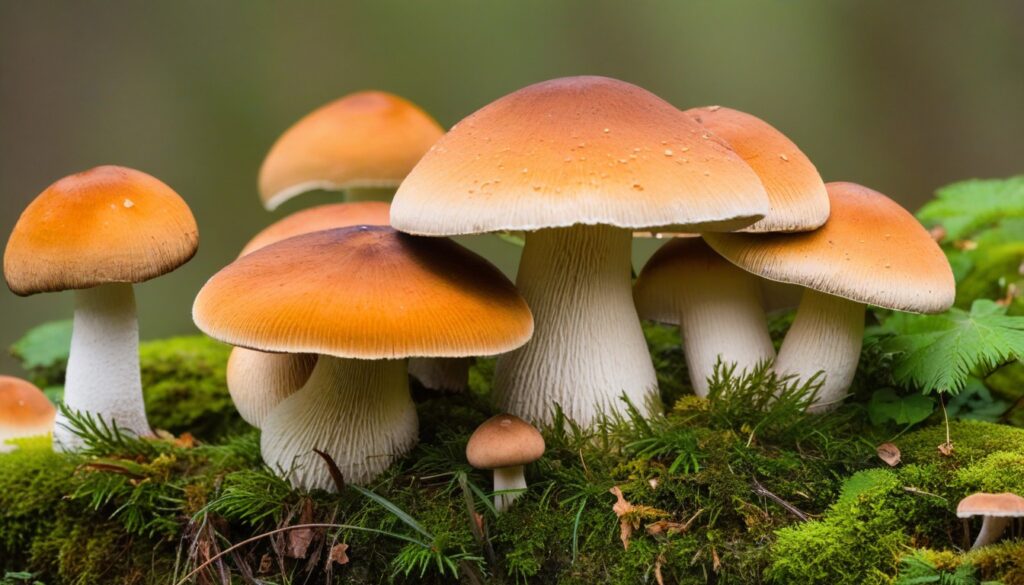Are you curious about the world of edible mushrooms found in the magnificent woods of Maine? Look no further than this comprehensive guide, where we will explore the various types of mushrooms that are safe to eat, learn how to identify them, and gain expert tips on foraging safely in nature.
Key Takeaways:
- Discover the fascinating world of edible mushrooms in Maine woods
- Learn how to identify safe edible mushrooms
- Gain expert tips on foraging safely in nature
- Explore the commonly found edible mushrooms in the Maine woods such as the Chanterelle, Morel, Lobster Mushroom, and others
- Understand the importance of safety and sustainable practices in mushroom foraging
Introduction to Edible Mushrooms
Edible mushrooms have been a part of human diets for centuries. They are not only a delicious addition to meals but also a potential source of nutrients and medicinal benefits. Understanding the world of edible mushrooms can be exciting and rewarding, leading you to discover a whole new world of flavors and textures.
Mushrooms are fungi that grow in a wide range of habitats and environments. They come in various shapes, sizes, and colors, and each type of mushroom has its unique flavor and nutritional profile. With over 10,000 species of fungi present in North America, it is essential to be able to identify the edible ones.
The culinary usage of edible mushrooms is also widely known. They can be a perfect meat substitute for vegetarians or enhance the flavors of meat dishes. Famous dishes such as risotto, stroganoff, and stir-fries feature mushrooms as their star ingredient.
Some of the key nutritional benefits of edible mushrooms include their high protein content, low calorie counts, and richness in vitamins B and D. Mushrooms also offer a vast array of minerals, including copper, potassium, and selenium.
This guide will help you understand the world of edible mushrooms and delve deeper into the distinctive varieties found in the Maine woods. Whether you are a seasoned forager, avid foodie, or just looking to explore new tastes, this guide has something to offer.
The Maine Woods and Its Mushroom Diversity
The Maine woods is a unique ecosystem that is home to a diverse array of mushrooms. With its cool climate, dense foliage, and abundant rainfall, it provides the ideal environment for different types of fungi to grow.
This region has a rich variety of edible mushrooms, such as the Chanterelle, Morel, and Lobster Mushroom. Each of these mushrooms requires specific conditions to thrive, and the Maine woods provide everything they need.
The Maine woods’ biodiversity presents a fantastic opportunity for foragers to explore and discover various mushroom species. This environment fosters an exceptional mushroom ecosystem and allows for foragers to collect a diverse range of species.
Beyond the edible mushroom selection, the Maine woods’ forest ecosystem contributes to the diversity of the entire ecology with an abundance of wildlife and plant species. Hence, sustainable foraging practices are essential to preserve the Maine woods’ delicate balance and ensure it continues to offer a fantastic opportunity for mushroom foragers for generations to come.
Table: Mushroom Diversity in Maine Woods
Mushroom Type | Habitat | Features |
|---|---|---|
Chanterelle | Forest floor, deciduous trees, mossy areas. | Deeply ridged cap, distinct apricot color. |
Morel | Sandy soil, near dead or dying trees, open areas. | Honeycomb-like cap, cone-shaped. |
Lobster Mushroom | Dead or dying hardwoods, roots. | Bright orange color, seafood-like taste. |
The Maine woods’ mushroom diversity is vast and offers foragers various mushroom types with different tastes and textures. As foragers explore this ecosystem and learn more about each mushroom species, they will discover exciting new culinary possibilities to experiment with in the kitchen.
Benefits of Foraging in Maine Woods
Foraging for edible mushrooms in the Maine woods offers numerous benefits, making it a popular activity for many people. One of the most significant benefits is the sense of connection with nature. Foraging allows you to escape from the hustle and bustle of daily life and immerse yourself in the great outdoors. You can breathe fresh air, listen to the sound of birds singing, and admire the beauty of the forest.
Foraging for mushrooms in Maine also promotes self-sustainability. You can gather wild food for personal consumption, reducing your dependence on grocery stores and contributing to a more sustainable lifestyle over time. Moreover, foraging can save money, as you can gather high-quality food for free and reduce your overall food expenses.
In addition to personal benefits, foraging has environmental advantages. It is a sustainable and eco-friendly activity that has a minimal impact on the environment. When you pick edible mushrooms carefully and responsibly, you can help maintain a delicate balance in the forest ecosystem.
The Joy of Connecting with Nature
For me, foraging for wild edibles is an escape from the man-made world and an opportunity to connect and explore the natural world around us. It is a constant learning experience and an opportunity to reconnect with an ancestral way of life. When you immerse yourself in this practice, you become part of a chain of millions of people who have practiced foraging through the ages.”
David Spahr
The Satisfaction of Self-Sustainability
Foraging also offers a sense of self-sufficiency and empowerment. When you gather food from nature, you become more connected to the source of your food, and you can appreciate the value of fresh, natural ingredients. Plus, if you develop your skills and knowledge, you can forage for food year-round, while identifying edible mushrooms online or in field guides, which can also help develop your confidence.
The Financial Savings of Gathering Wild Food
Gathering wild food for free in the Maine woods can lead to significant savings on groceries while also providing high-quality, fresh ingredients for your meals. Foraging can also lead to the discovery of new and exciting flavors and culinary possibilities.
Preserving the Environment
When you forage for edible mushrooms responsibly, you help preserve the delicate balance of the Maine woods. Foraging promotes the conservation of natural resources and the reduction of greenhouse gas emissions associated with industrial agriculture.
Overall, foraging in the Maine woods is a rewarding and beneficial activity that can enhance your connection with nature, promote self-sustainability, save money, and support environmental conservation efforts.
Common Edible Mushrooms in Maine
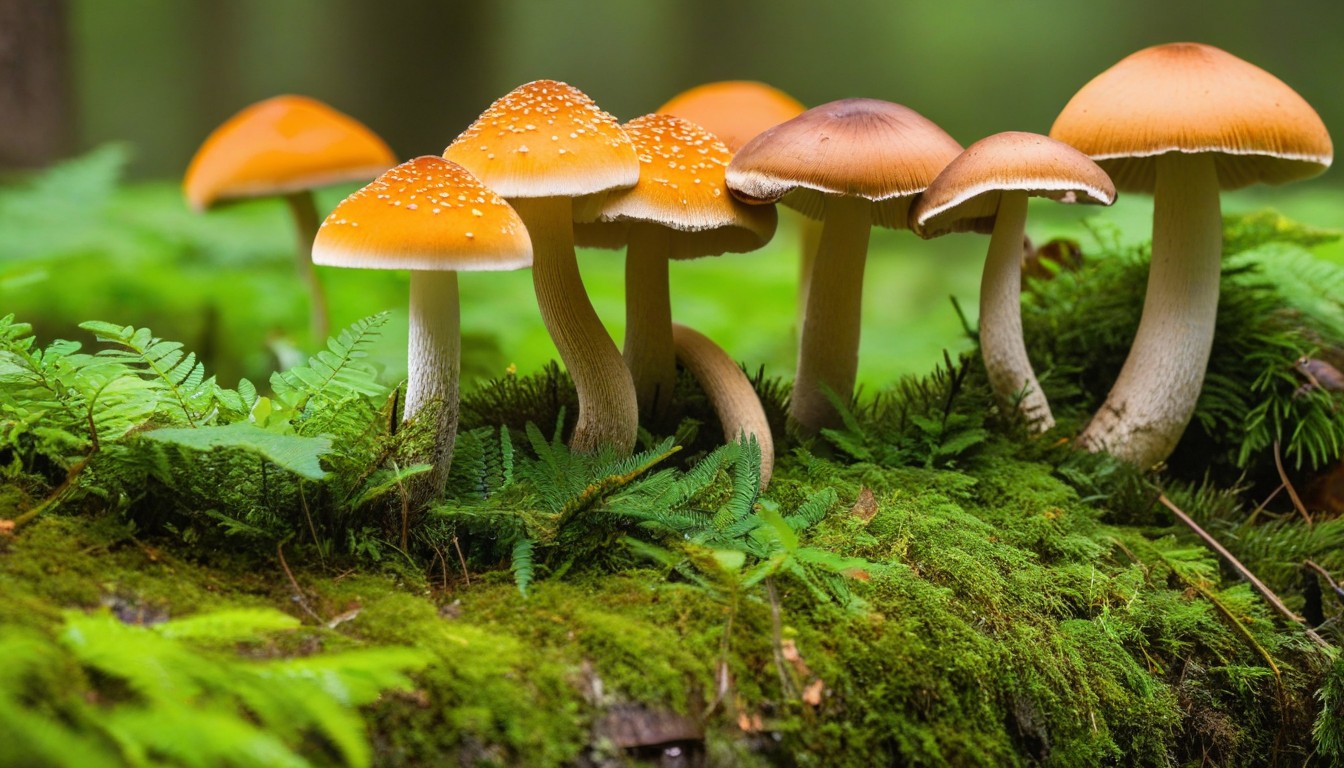
If you’re planning on foraging for edible mushrooms in the Maine woods, it’s essential to know which types are safe to eat. Here are some of the most common edible mushrooms you’re likely to find:
Mushroom Name | Identifying Features | Preferred Habitat | Season to Look For |
|---|---|---|---|
Chanterelle | Trumpet-shaped cap in shades of yellow-orange. False gills fold under the cap and run down the stem. | Under hardwood trees, particularly oaks and beeches. | Mid-July through September. |
Morel | Distinctive honeycombed cap in shades of brown or yellow. Cap and stem are completely hollow. | Burnt areas, deciduous forests, and coniferous forests. | Mid-April to early May. |
Lobster Mushroom | Bright orange or reddish-brown, with a firm, meaty texture. White lines running through the flesh. | Grows on or near decaying logs and stumps. | August to October. |
Black Trumpet | Trumpet-shaped cap in shades of dark brown or black. Cap folds inward and downward around the stem. | Under hardwood trees, particularly oaks and beeches. | June through August, but can be found as late as November. |
These are just a few examples of the delicious and safe-to-eat mushrooms you can find in the Maine woods. However, it’s important to note that these mushrooms can have toxic look-alikes. Therefore, it’s critical to properly identify mushrooms and follow safety precautions when foraging.
Precautions and Safety Measures for Mushroom Foraging
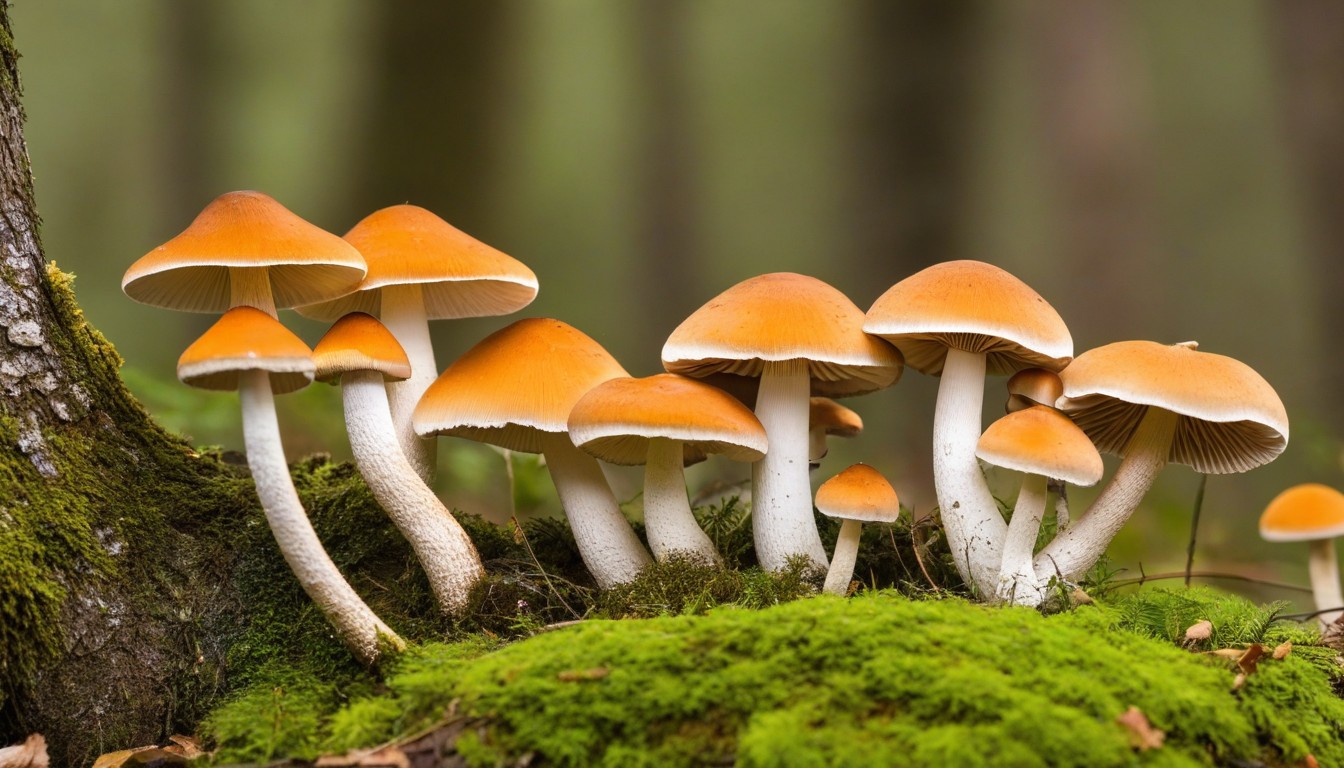
Foraging for wild mushrooms is an exciting activity that can bring joy and delicious flavors to your table. However, it’s essential to be aware of potential hazards, poisonous look-alikes, and take essential precautions to ensure safety during your foraging experience.
Essential Precautions:
- Always use a reliable field guide or smartphone app for identifying edible mushrooms accurately.
- Attend foraging classes or go with experienced foragers who can guide you.
- Avoid picking mushrooms growing near heavily trafficked roads, industrial areas, or places where chemical pesticides have been used.
- Never consume mushrooms that present physical abnormalities or strong, unpleasant odors or flavors.
- Do not consume alcohol or drugs while foraging as it can impact your judgment and attention.
Know Your Mushroom:
Become familiar with the various species of mushrooms found in the Maine woods, especially their identifying features, habitats, and time of the year when they are most abundant. Knowing what you are looking for can help minimize the risks associated with foraging.
Poisonous Mushrooms Look-Alikes:
Several poisonous mushrooms look very similar to their edible counterparts, which can cause confusion and potentially dangerous mistakes. Avoid picking mushrooms that resemble the following toxic species:
Poisonous Look-Alike | Edible Mushroom |
|---|---|
Amanita phalloides (Death Cap) | Agaricus arvensis (Horse Mushroom) |
Gyromitra esculenta (False Morel) | Morchella (True Morel) |
Chlorophyllum molybdites (False Parasol) | Macrolepiota procera (Parasol Mushroom) |
Overall, the best precaution is to be patient, informed, and vigilant while foraging. Follow the above tips, and you’ll be able to enjoy the delights of the Maine woods safely.
Tools and Equipment for Mushroom Foraging
For a successful mushroom foraging trip in the Maine woods, you’ll need the right tools and equipment. Here are some of the essential items to bring along:
Item | Purpose |
|---|---|
Basket or bag | To collect mushrooms without damaging them |
Knife | To cut the stem of mushrooms cleanly |
Field guide or smartphone app | To help identify different mushroom species |
Map | To navigate the woods safely |
Protective gear | To stay safe from insects, poison ivy, and other hazards |
With these tools handy, you’re sure to have a productive and enjoyable mushroom foraging experience in the Maine woods.
Techniques for Identifying Edible Mushrooms
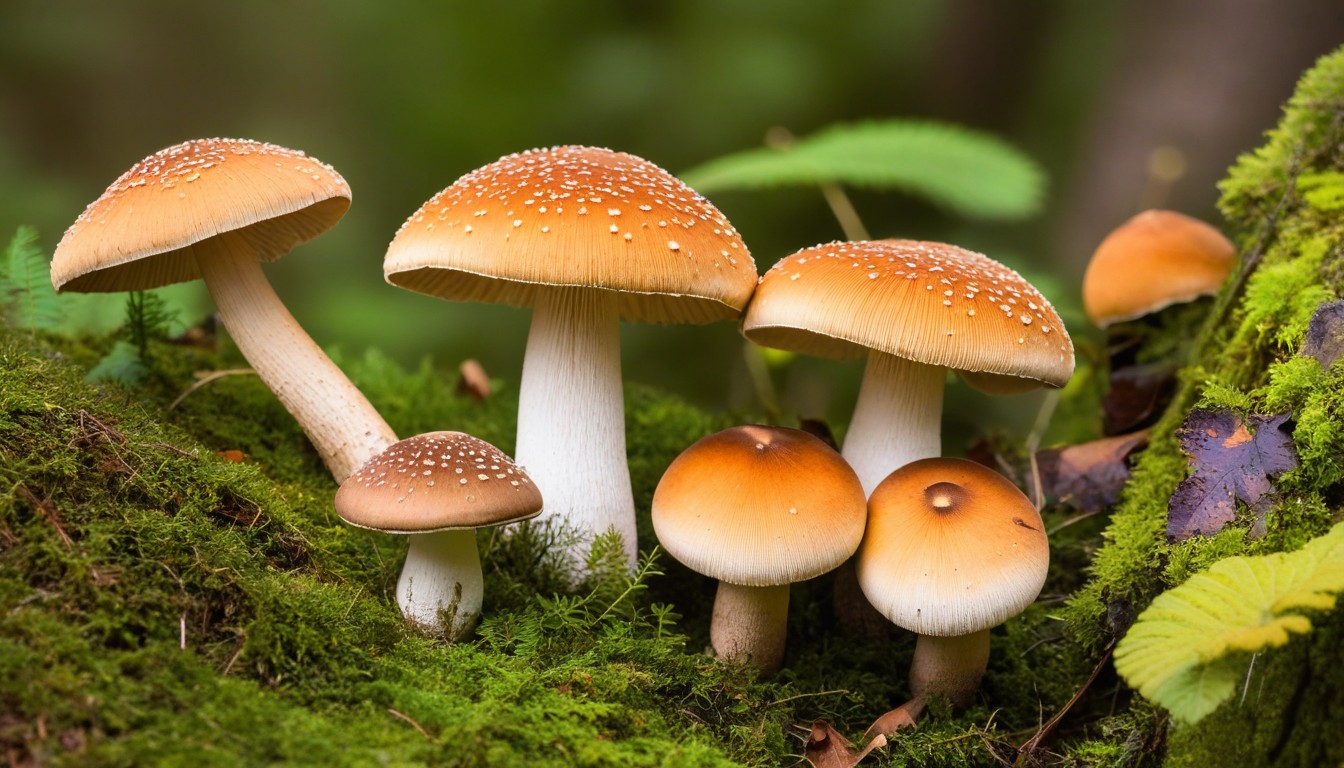
Identifying edible mushrooms in the Maine woods can be a challenge for the untrained eye. However, with the right techniques and knowledge, you can safely and confidently navigate the woodland environment and identify a variety of edible species.
One of the most important techniques for identifying edible mushrooms is to examine their physical characteristics. This includes studying their shape, color, texture, and the location where they were found. Learning the unique features of each species will help you differentiate between edible and poisonous varieties.
Another useful technique is to make spore prints. This involves carefully collecting a mushroom cap and placing it gill-side down on a piece of paper. After a few hours, the spores will drop onto the paper, leaving a distinctive pattern that can help identify the species.
Field guides and smartphone apps can also offer valuable assistance in identifying edible mushrooms. These resources provide detailed descriptions, photos, and even audio clips of mushroom calls.
Technique | Description |
|---|---|
Physical Characteristics | Examining the shape, color, texture, and location of the mushroom to identify unique features of each species. |
Spore Prints | Collecting a mushroom cap and placing it gill-side down on a piece of paper to observe the spore pattern, which can help differentiate between species. |
Field Guides and Smartphone Apps | Providing descriptions, photos, and audio clips of mushroom calls to enhance identification skills. |
By utilizing these techniques, you can become confident in identifying edible mushrooms in the Maine woods. Remember to exercise caution, always consult multiple sources when identifying mushrooms, and never consume a mushroom that you are unsure about.
Harvesting and Preserving Edible Mushrooms
After identifying and collecting edible mushrooms, it’s time to learn the proper techniques for harvesting and preserving them. Harvesting with care is crucial to ensure the sustainability of the ecology. The right tools like a sharp knife, scissors, or a small trowel can minimize damage to the reproductive system and maximize regrowth.
When it comes to preserving, drying is one of the most accessible methods. Slow drying mushrooms over a low heat, by air, or in the sun, help remove the moisture but preserve the nutrients and flavor. Freezing mushrooms in a single layer and transferring them to plastic bags or containers is also possible.
Another technique for preserving mushrooms is pickling. Mushrooms need to be thoroughly cleaned, boiled or blanched, and then placed in a vinegar and spice brine. Stored in an airtight jar, they can last for months.
A Comparison of Preservation Methods
Preservation Method | Pros | Cons |
|---|---|---|
Drying | – Easy to do at home – Retains flavor and nutrients – Long shelf-life | – Need heat source – Risk of mold |
Freezing | – Quick and convenient – Retains flavor | – Need freezer space – Quality may suffer |
Pickling | – Versatile use in dishes – Unique flavor | – Takes time – Vinegar may take over flavor |
Note:
Always follow food preservation guidelines to avoid food poisoning and spoilage. Remember, proper preservation plays a vital role in serving delicious and healthy meals for months to come.
“Well-preserved mushrooms are the gateway to creating long-lasting, gourmet delicacies.”
Cooking and Recipes with Edible Maine Woods Mushrooms
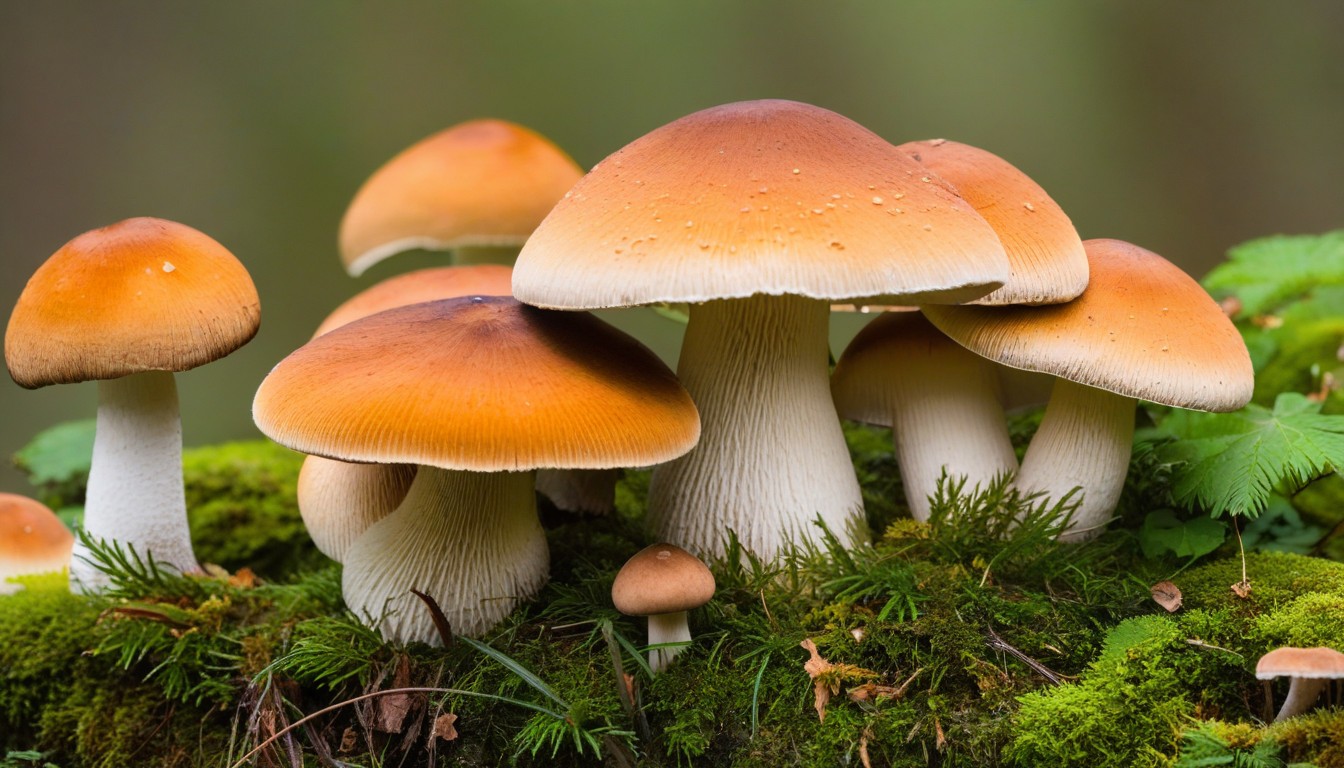
Now that you’ve foraged and collected a variety of delicious mushrooms from the Maine woods, it’s time to start cooking! Edible mushrooms can add rich, earthy flavors to any dish, from soups to stews to pasta dishes and more. Here are some tips for cooking and recipe ideas to incorporate these delectable ingredients into your favorite dishes:
Cooking Techniques:
The best way to prepare mushrooms for cooking is to clean them properly. To do this, use a brush or damp cloth to gently remove any dirt or debris. Avoid washing the mushrooms as they can absorb water and become mushy. Mushrooms can be sautéed, grilled, roasted, or even fried depending on the dish. Cook them until they’re browned and crispy to bring out their rich, nutty flavor.
Recipe Ideas:
Chanterelle mushrooms are great for risotto or as a topping for pizza. Morel mushrooms can be added to cream sauces, soups, or baked into quiches. The Lobster mushroom pairs well with seafood dishes, pasta, or as a flavorful addition to rice dishes. Try stuffing large portobello mushrooms with your favorite fillings such as cheese, sausage, or spinach for a delicious appetizer or main course. The possibilities are endless!
Mushroom Type | Suggested Recipes |
|---|---|
Chanterelle | Risotto, pizza topping |
Morel | Cream sauces, soups, quiches |
Lobster | Seafood dishes, pasta, rice dishes |
Portobello | Stuffed mushroom caps |
Experiment with different recipes and cooking techniques to find your favorite ways to incorporate edible mushrooms into your dishes. Not only do they add a burst of flavor, but they’re also a healthy, nutrient-packed ingredient as well.
Sustainable Foraging Practices and Environmental Impact
Foraging for edible mushrooms is an age-old practice that sustains and connects us to the natural world. However, it is essential that we approach foraging in the Maine Woods with sustainability at the forefront of our minds. Sustainable foraging practices are critical to maintaining the delicate balance of the environment and ensuring the continued availability of edible mushrooms for future generations.
The Role of Sustainable Foraging Practices
Sustainable foraging practices involve respecting the natural environment and its ecosystem while gathering edibles. These practices include leaving no trace, harvesting only what is necessary, avoiding destructive tactics, and being aware of any local regulations. By implementing sustainable practices, we can sustainably harvest and savor Maine’s rich bounty without compromising the delicate ecosystem.
Minimizing Environmental Impact
Foraging practices can greatly impact the environment, and the Maine Woods ecosystem is no exception. Overcollecting can destroy habitats for mushrooms, leading to long-term losses. Additionally, careless foraging that ignores local laws and habitats can impact non-target species, including plants and wildlife. It is, therefore, crucial that we minimize our impact on the environment by respecting the ecosystem, complying with regulations, and promoting conservation.
The Importance of Conservation
Edible mushrooms play an essential role in the Maine Woods ecosystem. They are food sources for animals, decomposers of plant waste, and indicators of overall ecosystem health. Preserving this rich and complex habitat is key to sustainable and successful foraging. Taking action to conserve the environment is vital to the survival of not only the mushrooms but the entire ecosystem.
Sustainable Foraging Tips | Environmental Impact Considerations |
|---|---|
Do not overcollect | Respect local regulations and habitats |
Only harvest what you need | Practice conservation and leave no trace |
Do not use destructive methods | Minimize your impact on non-target species |
By implementing these sustainable foraging practices, we can continue to enjoy the natural bounty of the Maine Woods while preserving the environment for future generations. Let us remember that foraging, when done right, is not only rewarding but it is an opportunity to connect with nature and contribute to sustainable living.
Conclusion
Foraging edible mushrooms in the Maine woods can be a thrilling and rewarding experience for food enthusiasts and nature lovers alike. With the knowledge gained from this guide, you can safely identify, harvest and preserve an array of mushrooms found in the region. Discover the culinary potential of these wild ingredients and enjoy the unique flavors of the Maine wilderness.
Remember to follow sustainable foraging practices and minimize your environmental impact. Take only what you need, leave no trace, and respect the delicate balance of the ecosystem.
So what are you waiting for? Grab your basket, put on your comfortable shoes, and head out to explore the wonders of the Maine woods. A delicious surprise awaits you at every turn.
FAQ
What are edible mushrooms?
Edible mushrooms are fungi that are safe for consumption and have culinary uses. They can be cooked and added to various dishes for flavor and nutritional benefits.
Why should I be interested in edible mushrooms in the Maine woods?
The Maine woods offer a diverse range of edible mushrooms, providing an opportunity to explore nature, connect with the environment, and savor the flavors of the wilderness.
How can I identify edible mushrooms?
Identifying edible mushrooms requires knowledge of their physical characteristics, habitat preferences, and proper identification techniques. It is recommended to consult field guides or seek guidance from experienced foragers.
Are all mushrooms in the Maine woods edible?
No, not all mushrooms in the Maine woods are safe to eat. Some mushrooms are toxic or poisonous and can cause serious health issues if consumed. It is essential to learn about the specific edible mushrooms and exercise caution when foraging.
What are some commonly found edible mushrooms in the Maine woods?
Some commonly found edible mushrooms in the Maine woods include the Chanterelle, Morel, Lobster Mushroom, and Chicken of the Woods. These mushrooms have distinct features and are sought after by foragers.
Is mushroom foraging legal in the Maine woods?
Mushroom foraging is generally legal in the Maine woods for personal use. However, commercial harvesting may require permits or licenses. It is important to familiarize yourself with any local regulations or restrictions.
What safety precautions should I take while mushroom foraging?
Safety is paramount while mushroom foraging. Always consult an experienced forager or mycologist for guidance, properly identify mushrooms before consumption, wear protective gear, and avoid consuming wild mushrooms without expert confirmation.
How can I preserve the mushrooms I forage in the Maine woods?
Mushrooms can be preserved through various methods such as drying, freezing, or pickling. Each preservation technique has its own requirements and benefits. It is important to follow proper procedures to ensure the longevity and quality of the harvested mushrooms.
Are there any poisonous look-alike mushrooms in the Maine woods?
Yes, there are several poisonous mushrooms that resemble edible ones in the Maine woods. It is crucial to be able to differentiate between edible mushrooms and their toxic counterparts. Being cautious and thoroughly researching each mushroom is essential for safety.
Can I find edible mushrooms in the Maine woods year-round?
Edible mushroom availability varies throughout the year, with some species being more prevalent during specific seasons. It is important to understand the life cycles and growth patterns of different mushroom species for successful foraging.

